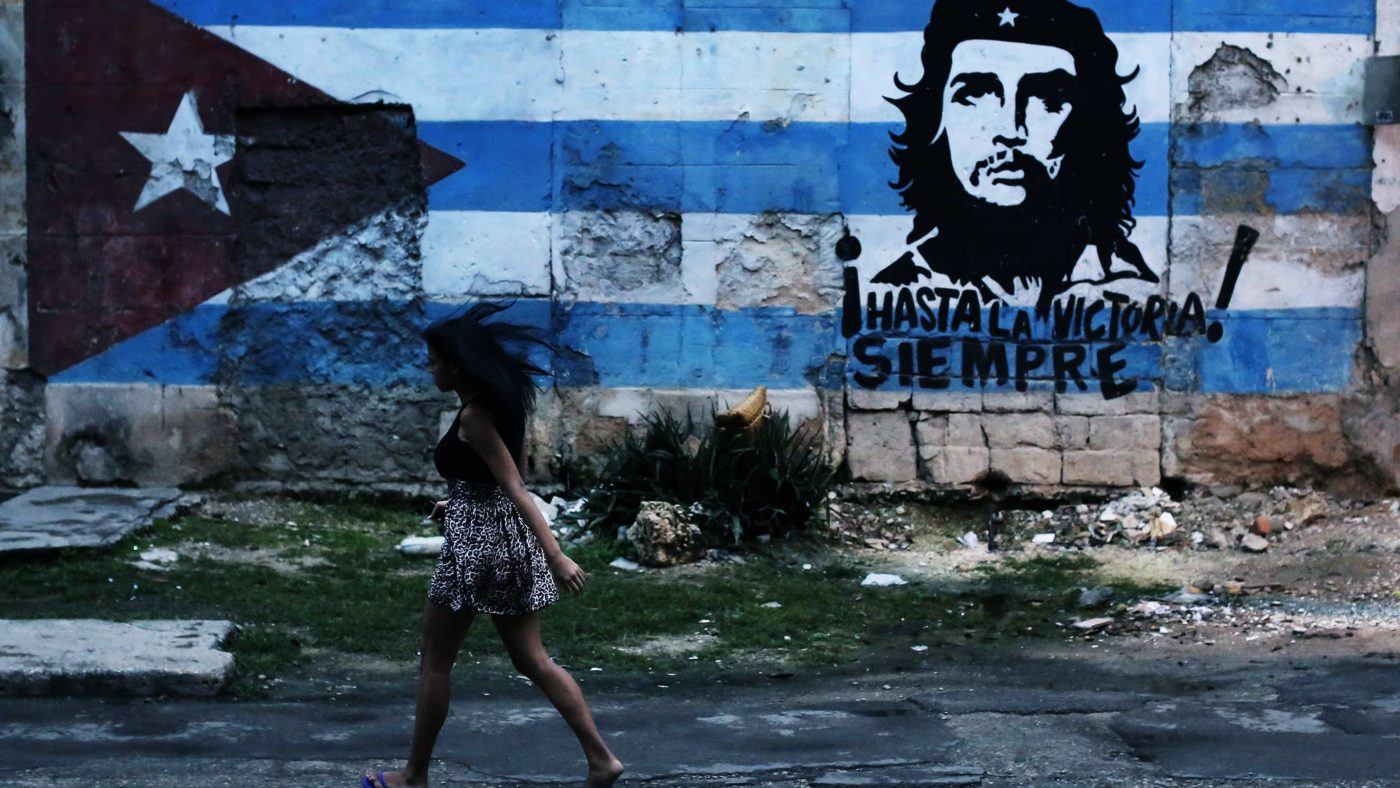With its classic cars and colourful buildings, Cuba is a paradise for the casual visitor; an island where the rum seems to flow endlessly and the salsa beats fill the air. But the truth could not be further from the image it projects; look closer at the buildings and you see the chipped façade is concealing a crumbling internal structure. The pretty cars haven’t got many more miles in them.
When I visited Cuba, in the summer of 2015, the revolutionary spirit that had been so central to Cuban life since 1959 was starting to wane. The younger generation, with no memory of the “glorious revolution” or the life before it, was growing up and taking over, hungry for change.
The Revolutionary Square opposite Guevara’s mausoleum was once proundly adorned with red and black “26 Julio” revolutionary flags. When I visited, one lone, guard was keeping sleepy watch over the impressive – yet barren – square.
Now, with Fidel gone and the US trade embargo lifted, it seems clearer than ever that the old Cuba’s days are numbered.
So what’s in store for the island?
Since taking office in 2008, Castro’s brother, Raul, has spoken of the need to reform Cuba’s economic system; these reforms will doubtless continue at a faster pace now that Fidel’s “Castro-era” is drawing to a close.
Faced with an ageing population, extreme foreign debt, and economic struggle following the 2008 crash, Raul has sought to liberalise the cumbersome, largely state-owned, economy, as well as conceding on some personal freedoms such as travel outside the country and ownership of some consumer goods. He is pulling away from the full socialist model Cuba has historically preferred.
His reforms have included relaxing regulation on small businesses, the decentralisation of the farming sector, and the opening up of real estate markets. As a result, the number of self-employed workers in Cuba tripled between 2009 and 2014 and the in that time the private sector also grew to 20 per cent of the national economy.
As the island moves towards a more Western economy, you can see the “capitalist shift” taking place, most obviously in the abundance of Coca-Cola in bars. Even this fizzy drink, the perfect example of Fidel’s dreaded “Yankee imperialism” has now found its way to the island. It’s presence neatly illustrates the popular desire to move away from the socialist planned economy and dump the restricted rights that have come with it.
Hopeful signs of a fruitful and positive relationship were given when Raul Castro and President Obama met back in 2015. The liberalisation of the island’s economy, allied with the absence of Fidel, should bring Cuba and the USA closer together – two nations which were previously a world apart.
The US has been Cuba’s fifth-largest trading partner since 2007 following George W. Bush’s decision to reauthorise the export of US agricultural products to the island. America will rise up this list in the next few years since US telecommunications and agriculture companies will make the biggest gains from expanded trade with Cuba.
Fidel Castro’s death doesn’t so much signal the victory of capitalism as mark the final breath of Marxist-inspired socialism. The future of Cuba may be uncertain, but the desire for change in the country is irresistible. A new revolution is coming: an economic one.


